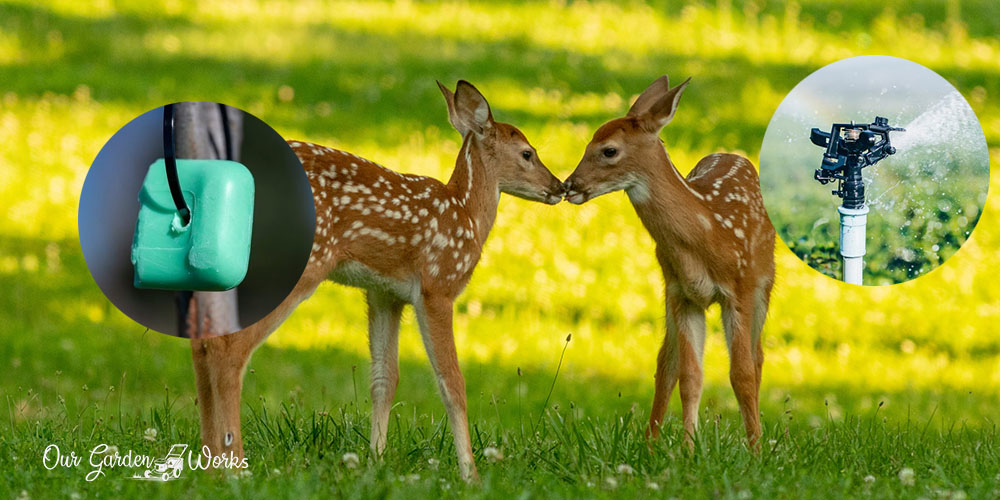Deer are cute until they start chewing on your hard-earned fruits and veggies in the garden. Despite their elusive nature, they will bravely get close to your dear plants due to excessive hunger from the long winter months.
In this post, discover how to get rid of deer on your property without physically harming them, unless you’re into hunting.
In keeping pests away from your garden, the most productive strategy is to know more about the pest to get the right solution.
Doing so will not only save you time but also money on spending on things that just don’t work on these majestic creatures.
(You could use the table of contents below to jump to the sections that are most important to you.)
The Deer Diet and Browsing
Deer are known to be an herbivore that feeds on shrubs and young trees with tender stems and crunchy leaves.
They are part of the ruminant mammals that have a unique digestive system that contains four chambers. During harsh winters, desperately hungry deer also eat meat from small mammals like rabbits, birds, and frogs.
The diet of deer is called browse, which includes twigs, leaves, and tips of woody plants.
So, in general, they are called browsing animals along with other mammals like giraffes. The act of feeding itself is called browsing and deer often use their strong sense of smell to find their favorite meals, such as:
Deer often visit residential areas during summer and fall to gain enough fat stores in preparation for winter.
Unlike chipmunks who occasionally snack during winter, deer spend their body fat to survive which makes them intensely hungry during spring and summer.
How To Get Rid of Deer in Your Garden Without Harming Them
Before you proceed with checking the list of solutions below, you must ensure that the deer are the actual culprit that mangled your plants.
The best way to identify a browsing activity is by checking for shredded stems and leaves and browse lines on nearby trees.
Browse lines are leafless stems on young trees which indicates where browsing animals have eaten.
Lastly, the obvious sign is you’ll catch them in the act of eating your poor plants. Now, let’s head on the several ways how to get rid of deer and spare your growing crops.
#1 Avoid browse-sensitive trees
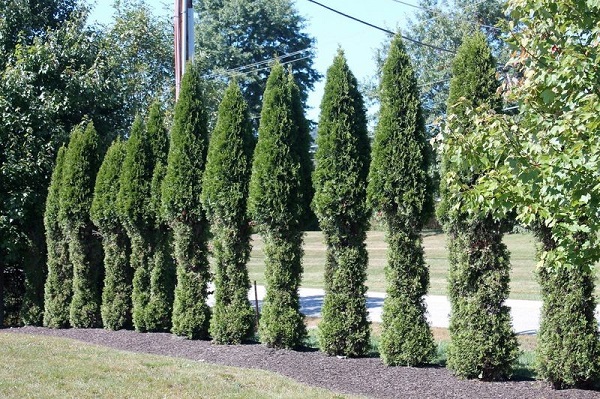
Probably the best way to save your heart as a plant lover is to steer away from growing plants that are palatable to deer and browsing animals.
Not all kinds of plants are desirable for deer. They hate feeding on plants that are not digestible like ferns and invasive plants.
Rutgers, The State University of New Jersey has an extensive list of most to least browse-sensitive plants that you can grow in your yard.
Here are some of the plants that are most browse-sensitive that you should avoid if you want to keep deer out of your property:
- American arborvitae.
- Evergreen azaleas.
- Hosta.
- Rhododendrons.
- Tulip.
- Wintercreeper.
- Young conifers like pine trees.
- Young hardwood trees.
- Birch trees.
- Oak trees.
It can be hard to avoid growing such beautiful plants but it can save your gardener’s heart from seeing them mangled by hungry deer.
If you’re eager, you can place the most browse-sensitive plants in the middle of invasive plants.
If there’s a ton of deer hanging out around your garden, here are some of the best plants to have without worrying about deer eating them:
- Cinnamon fern.
- Common boxwood.
- Common foxglove.
- Tansy.
- Daffodil.
- Forget-Me-Not
- Horseradish.
#2 Bud capping

Bud capping is a method where the central stem of a tree seedling is covered with paper or a net to protect it from browsing animals like deer.
It is a method recommended by the US Forestry Service since it helps protect the seedling while allowing it to grow through the paper.
Bud capping is easy to do and cheap to make. You only need a small piece of paper or mesh cap and a stapler. Here’s how to properly do it:

#3 Perimeter fence
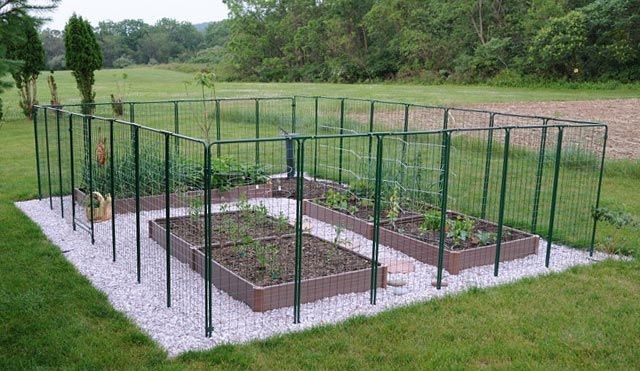
If you have some budget to build a fence, it would be the most secure way to deter not only deer but also other growing season critters like chipmunks, squirrels, and rabbits.
The ideal height for a fence against deer is 6 feet. They are quite tall and can somehow try to jump into a garden if they smell their snacks.
There are four ways you can set up a fence for your plants, such as:
(1) Mesh fencing: Polypropylene is probably the most affordable material that you can use for fencing.
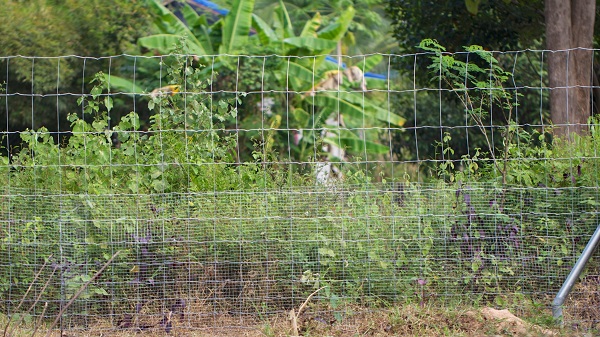
Deer are quite strong mammals wherein they can tear thinly-made mesh material. So, make sure to choose the thickest fibers with an 800-pound breaking point.
With mesh fencing, the stakes or foundations are very crucial. At some point, you may want to place the foundations closer to each other to give the mesh a good stretch.
Here are some of the best materials that you can use for your deer fence:
(2) Metal fencing: Some deer can be really strong and tear down plastic fences which makes a metal wire fence a better alternative.
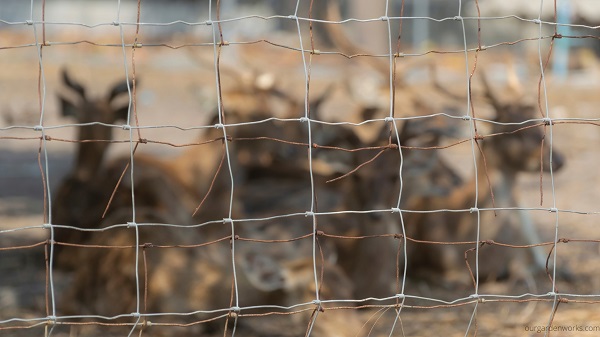
It is durable, stands on its own, and requires less foundation or frame than mesh. The only catch is it is more expensive but can last for several seasons.
(3) Privacy fence: When deer can’t see the other side of the fence, they become more cautious and try not to pry even if they smell your plants.
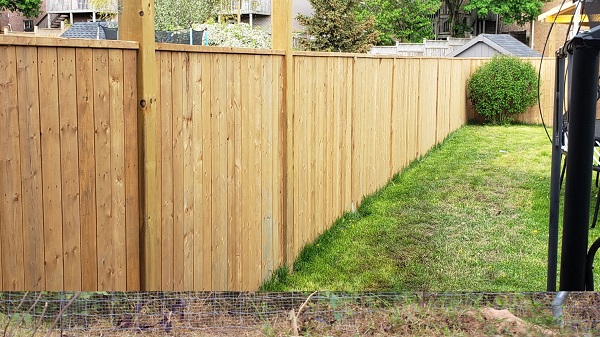
A privacy fence made of wood is much better to protect your plants but it is also a big investment. It also needs to be maintained every year to maintain its durability and protect it from pests.
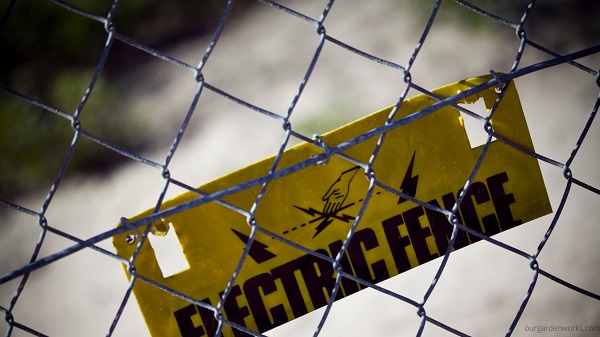
(4) Electric fencing: Some deer are quite hard to warn and sometimes you need to teach them a lesson by using a more effective fence for your plants. It is a metal fence but you just need to invest in how to electrify it.
The goal of using electric fencing is not to harm the deer and keep it on forever but to trigger their elusive behavior.
All you need is for them to make an attempt and get hurt a bit to discourage them from trying to break in again.
#4 Increase dog visibility in the area

Why not hit two birds with one stone by letting your dog have its daily exercise and keep the deer at bay at the same time?
Deer sense danger from almost any animal. It evades as soon as it notices any movement or sound. Let your dog stay around your yard because you’ll surely get two things: a deer-free yard and a happy dog.
#5 Use a pile of aggregates
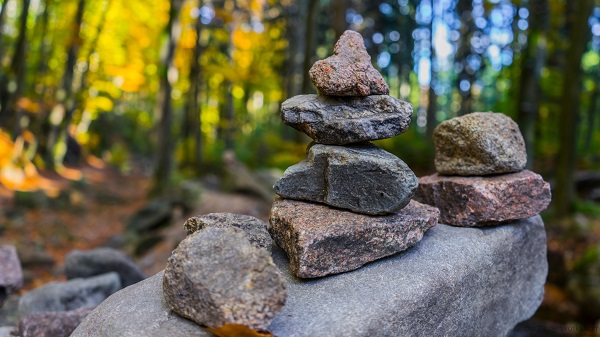
Deer prefer a more level terrain than climbing steep aggregates. So, use this to your advantage and place a pile of aggregates around your yard or garden to discourage them from eating your plants.
A good way to make the aggregates look pleasing while serving as a deer-deterrent is to use them for a water garden or a unique garden path.
#6 Consider spruce as natural fences
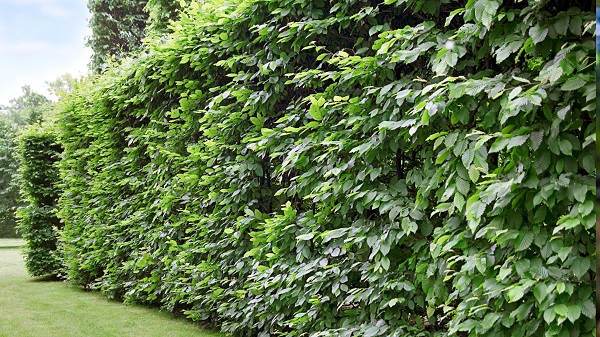
Tall hedges can help block the view from your garden which is crucial for deer looking for food.
If you want a more natural way to deter deer, planting 8-foot hedges would be the best idea.
However, since they are still a plant, some desperate deer might still get through but the chances are very slim since deer are afraid of going through areas with no visibility.
#7 Place lights and motion-activated sensors to scare them off
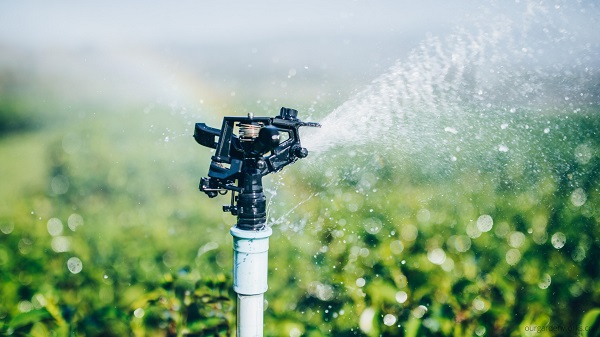
Deer are probably among the most frantic animals you’ll ever encounter because they get nervous at the faintest sound or movement.
With that, you can set up some motion-activated lights and sprinklers that can detect their presence in your yard.
Here are some of the best options that you can choose from:
Sprinkler
- Orbit 62100 Yard Enforcer Motion-Activated Sprinkler with Day & Night Detection.
- Hoont Cobra Deer Repellent.
- Havahart 5277 Critter Ridder Motion Activated Animal Repellent and Sprinkler.
Lights
#8 Mask the smell of your plants with pungent scents
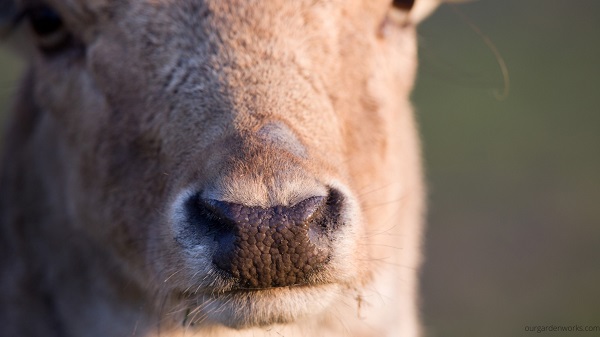
The deer’s ultimate asset is its intense sense of smell. It can detect your scent from a mile and simultaneously recognize six scents at a time.
You can use its powerful nose by masking the smell of your plants using the scents they hate.
Scents that deer hate
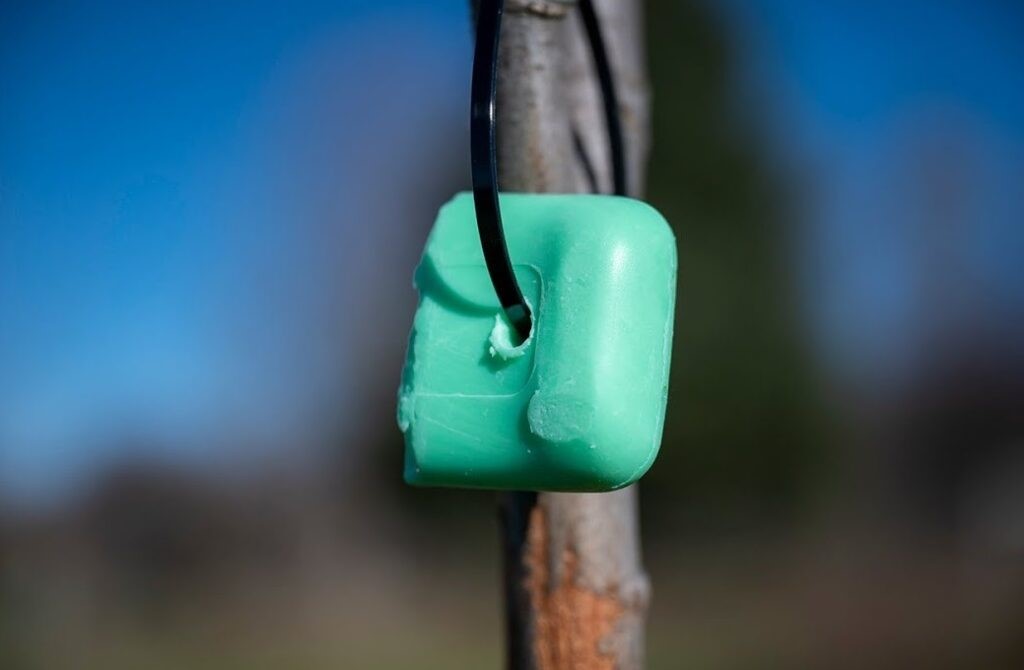
Three things can turn a deer away, these include:
(1) The smell of predators: Trick the deer that a predator is around by spreading a few drops of urine from the following animals:
- Dog.
- Coyote.
- Fox.
(2) Intensely fragrant perfumes or soaps: Intense scents of perfumes and soaps can send signals to a deer about a human approaching.
Sometimes, they also irritate their noses much like how your dog sneezes when it smells something too fragrant.
Gardeners use the intense smell of Irish Spring soap to deter deer
by placing it in a bag and placing it around the perimeter of the garden.
(3) Aromatic herbs and flowers: Aromatic plants are not only efficient in keeping insects at bay but also some hungry deer foraging for winter.
You can place these herbs and flowering plants around your browse-sensitive plants to mask their scent:
#9 Try not to feed them.
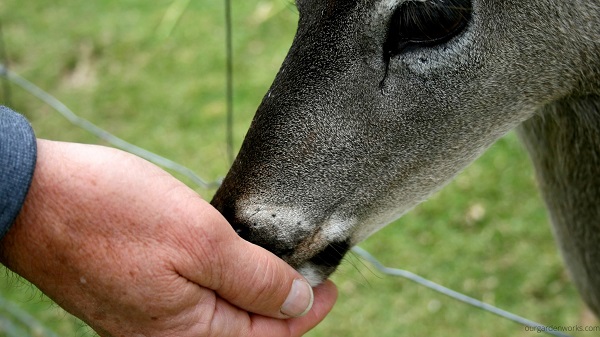
Deer are adorable and can be irresistible to feed when they come around. However, once you feed one, it will keep coming back to your property and even bring its whole family with it.
Check out the man who is surrounded by a herd of deer by just feeding one of them.
#10 Homemade deer repellent
Lastly, you can make a concoction of deer repellent using some items in your kitchen. One of which is egg and water. Here’s how:
- Get 4 eggs and 20 liters of water.
- The ratio of the solution is 1 egg per liter. So, increase the water and egg accordingly based on the amount you’ll need to cover the perimeter of your garden.
- Mix the egg and water and splash them around your garden. The smell of eggs is pungent to deer and can discourage them to go near your plants.
Frequently Asked Questions (FAQs)
What smell will keep deer away?
The smell that keeps a deer at bay is the scent of urine from predatory animals, aromatic herbs, and fragrant soaps. They also hate the smell of raw eggs.
Does vinegar repel deer?
Yes, deer hate the intense smell of vinegar. Simply, dilute 8 oz. of vinegar to a 16 oz. of water and spray around your garden. The intense smell of vinegar can irritate the noses of curious fawns and deer spectating your crops and flowers.
What is the most effective deer repellent?
The most effective deer repellent is fencing your garden. They may hate some scents but may outsmart your scent defenses out of intense hunger. So, better place a physical barrier than take any chances.
Final Thoughts
Learning how to get rid of deer on your property can lead you to the rabbit hole of hunting and commercial deer repellents. We highly recommend using natural ways to keep them off your yard because turning to chemicals means.
Which method in this post worked best for your deer problems?
Let us know in the comments below. Also, please don’t forget to share this with your friends and help them have their crops and secure their harvest this growing season.
